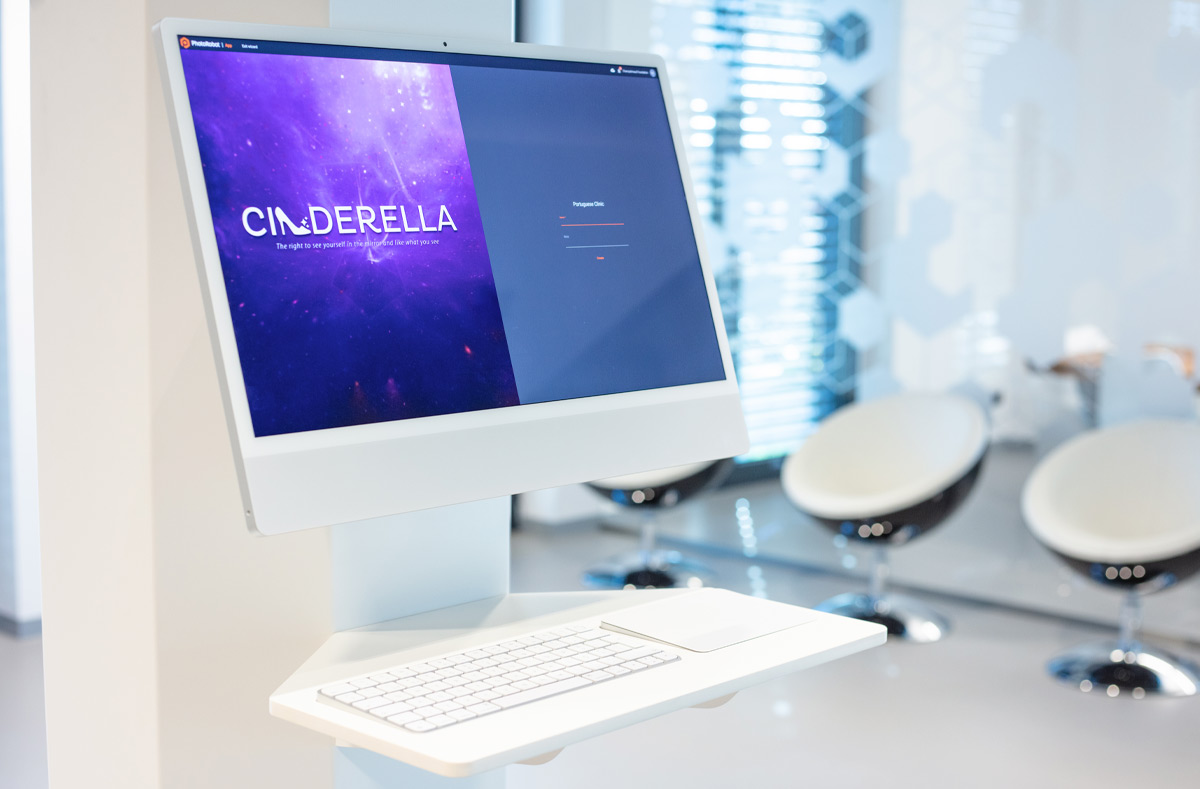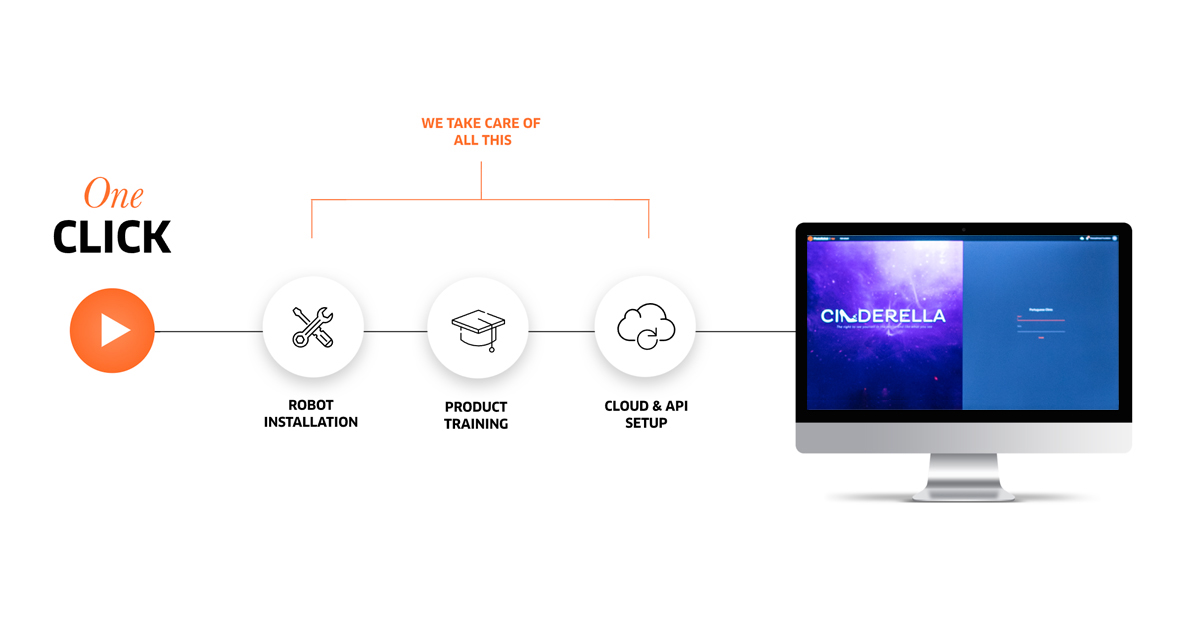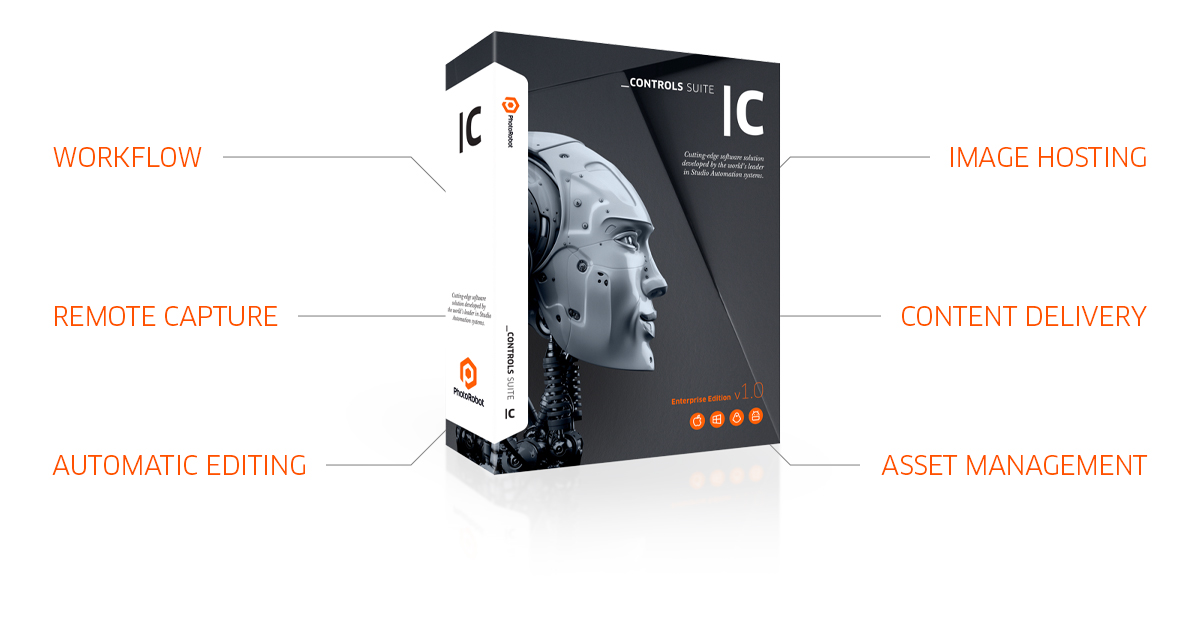Previous
Custom Photography Solutions and Technology


PhotoRobot launches a medical robot photographer to optimize the picture-taking of patients in clinical procedures and health centers.
PINK is a prototype medical robot photographer to optimize the picture-taking of patients in a clinical setting. Think of it as a high-tech photo booth that runs at the scan of a start barcode. It has built-in cameras, automated lighting, and photography automation software automatically editing and delivering images to a clinic’s internal systems.
The solution not only aims to make it easier to obtain high-quality 3D images of patients. It should also make the picture-taking process more comfortable overall, and help reduce time and human resource consuming manual processes. The device also features an integrated secondary display monitor for video-conferencing between a patient and remote doctor.
This 100% custom solution results from a collaboration between PhotoRobot and Maria João Cardoso of the Champalimaud Foundation. It is now available in Portugal, Poland, Italy, and Israel, and is part of a wider clinical trial. Read ahead to learn more: from the technology behind PINK, to its implementation within the CINDERELLA Project.

PhotoRobot designed PINK as a 100% custom medical photography robot for clinics and health centers. The prototype device functions as an easy-to-use photo booth-like system to automatically obtain high-quality 3D images of patients. It should optimize picture-taking procedures, and replace the need for professional medical photographers and image editing.
The system has a professional built-in camera, an illuminated background with automatic lighting, and an interior video display monitor. Its construction also features the same exceptionally resistant and robust, automation-driven hardware of PhotoRobot systems.
Moreover, PINK has extremely simple controls, featuring a clean user interface with barcode reader integration. This system enables health care professionals to run an entire photography procedure by simply scanning a patient’s barcode. Staff simply guide a patient into view of the camera, and the robot takes photos in the necessary positions.
The software guides the system to take pictures at pre-programmed angles, and to automatically post-process and deliver images. In this way, all complex operations are completely hidden, making use of the machine effortless. Thus, user-training requirements as well as operational costs are minimal, allowing clinics to better allocate time and resources.

Kiosk modes within PhotoRobot software help to answer for the learning curves of onboarding complex, industry-specific control software. These modes use pre-programmable settings to simplify machine operation, providing an alternative to manual hardware, camera, and sequence configuration. They also replace the traditional control interface with one free of all complexity, and are customizable for different use cases.
Usually, a technician or project manager will configure Kiosk modes, such as the one for PINK. They can also customize different kiosks for various applications, and different procedures. This includes all operations running in the background, from capture to light settings, image post-processing and delivery. The software groups and attaches these to a simple command interface accessible when launching the system in a saved kiosk.
PINK for example provides a control system with an extremely simple user interface over an Apple iMac computer. Logging into the system automatically launches it in its Kiosk mode, and displays a custom start screen. Here, the machine runs the pre-programmed processes automatically and in the background at the scan of a patient’s barcode. The software even delivers post-processed images to the clinic’s internal systems, all without human touch.

To take high-quality photos, PINK integrates photographic equipment from Canon, and a built-in lighting system. The professional camera and lens support automated remote capture, and feature in the interior of the booth. Meanwhile, a special mounting system can automatically move the camera up or down on a vertical axis. The built-in lighting then illuminates the subject from behind to ensure a clean white background in photos. This helps with both the automatic post-processing of images, and ensures photos are suitable for a range of applications.

Automation of photography post production is also integral to PhotoRobot’s DNA, and a fundamental part of PINK. For example, immediately after capture, software operations automatically remove the background from photos, post-process images, and deliver files. This is all according to a clinic’s internal requirements, and automatic thanks to pre-programmable post production settings. These settings can range from basic to advanced operations, and are configurable on installation or customizable by a technician. In this way, repeatable processes become “set once and forget,” and make the system more adaptable to different user-levels.

The interior of the photo booth features an Apple Studio Display monitor with a built-in microphone and quality speakers. It has a 27-inch, 5k Retina display, highly advanced audio, and a 12MP ultra-wide sensor camera. Together, these allow for easy video conferencing between a patient and remote doctor. The display shows a large image of the doctor when on call, and also a good quality image of the patient with the camera focusing on their face.

Like all PhotoRobot machines, the construction of PINK uses only the highest quality machining and components. In the end, the goal is long-term, high-use durability. Each part of the device is thus highly resistant to wear and tear. Meanwhile, all surfaces are extremely easy to clean, and cables as well as technical components are hidden within the machine. This ensures maximum protection for all integrated equipment, from the camera and light system to the secondary interior display monitor on a VESA mount. All of these components are then easy to maintain thanks to the quality of construction, and easy to service when the need eventually arises.

Maria João Cardoso is the Coordinator of the Breast Unit Surgical Team of the Champalimaud Foundation, and Cinderella Project Coordinator. The Cinderella Project aims to propose a way to optimize the prediction of the aesthetic results of reconstructive breast cancer surgery. This in order to improve womens’ satisfaction with their own body image after an operation.
The solution should help patients to visualize and be more confident in a choice between multiple treatment options before intervention. Further, the method should lead to higher satisfaction rates after a surgery, as it helps to build more realistic pre-op expectations.
For this, the project proposes a combination of photographic technology and AI software to automate and improve assessment and prediction. In its role, PhotoRobot serves to simplify, speed up, and automate repeatable photography processes. Automation also ensures minimal user-training requirements, and reduces time and resource consuming manual operations.
The high-quality 3D images PhotoRobot produces are then suitable for use with AI software, in this case BCCT.core. This AI (in development by Maria João Cardoso, and Jaime Cardoso, from INESC TDC in Porto) helps with so-called objective assessment. The algorithm links to a web-based health platform (CANKADO) with information about every possible type of surgery and quality questionnaires. Here, it also connects to the image repositories of multiple centers using CANKADO to help the AI automatically classify the results of different surgeries.

The so-called objective assessment involves taking many photos of a patient to measure distances, compare symmetry, etc. These photos then require assessment typically from an expert not involved in the treatment. It is also preferable that multiple parties provide their assessment to avoid any bias.
This usually calls for high-quality digital photographs health care providers can use to take measurements from images on a screen. However, in the scope of the Cinderella Project, AI will take over part of this objective assessment. It will automatically classify the aesthetic quality of surgical results, and have precision equal to a group of human experts.
To achieve this, the software learns from the 3D images which PhotoRobot automatically produces. PhotoRobot software also automates post-production to optimize images for AI analysis and internal systems: background removal, post-processing, and automatic delivery.
The BCCT.core algorithm is then able to analyze and compare thousands of pre- and post-surgical photos at once. This helps the algorithm to improve its automatic evaluation, and in 99% of cases to distinguish really bad from really good surgical results. For more intermediate cases, however, evaluations still become more imprecise.

Custom photography robots like PINK cater to the extremely rare cases in which existing PhotoRobot technology cannot meet business needs. However, one or a combination of robots can unusually answer for any industry, project, or application requirements. From eCommerce photography, to academic, medical and scientific photography robots, PhotoRobot is highly modular to adapt to any unique demands.
Curious to judge for yourself? Reach out to request a custom demo around the unique problems your business needs to solve. PhotoRobot technicians will determine the level of photography automation you need, and suggest a unique solution for your business operations. This includes everything from the machinery to the software, cameras, equipment, required outputs, and detailed documentation of integration and production.